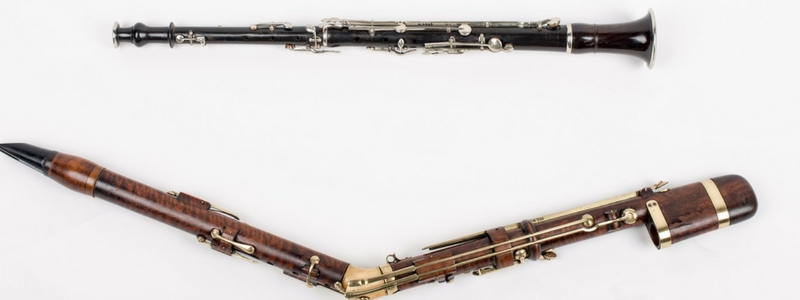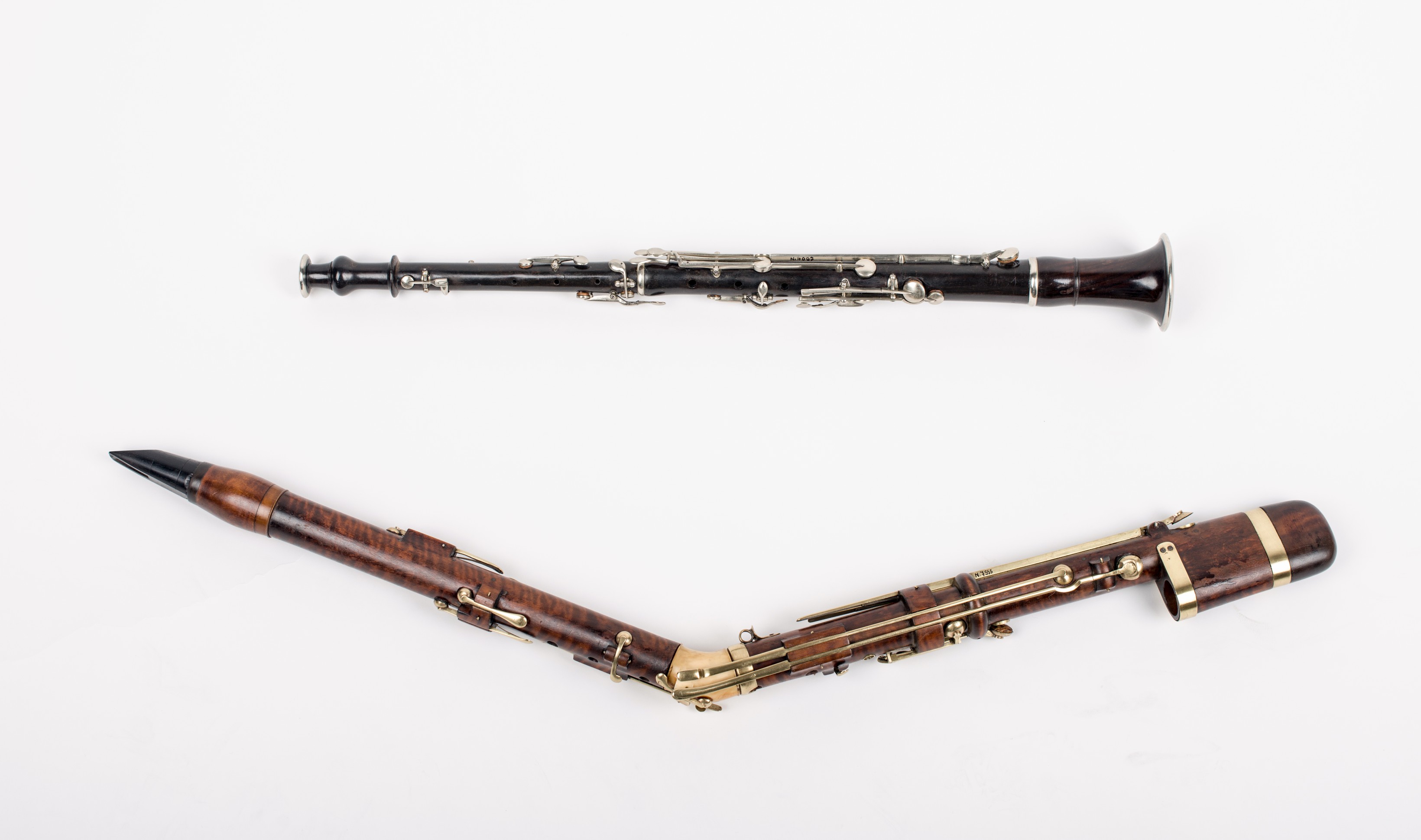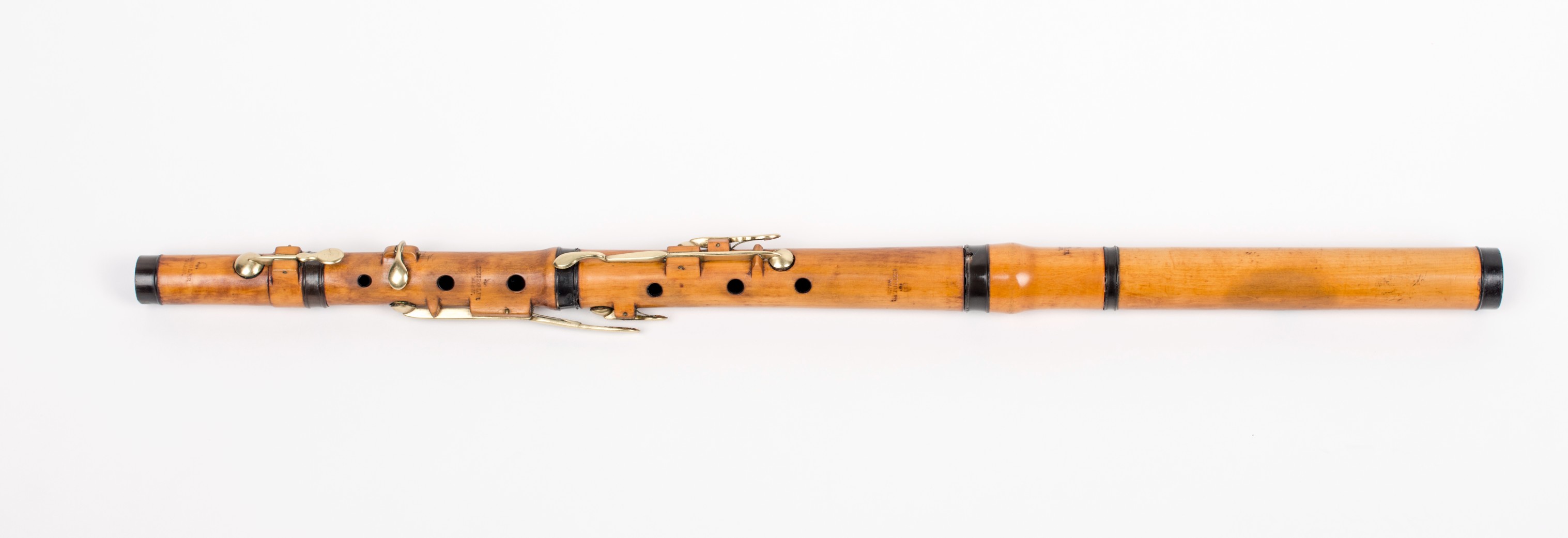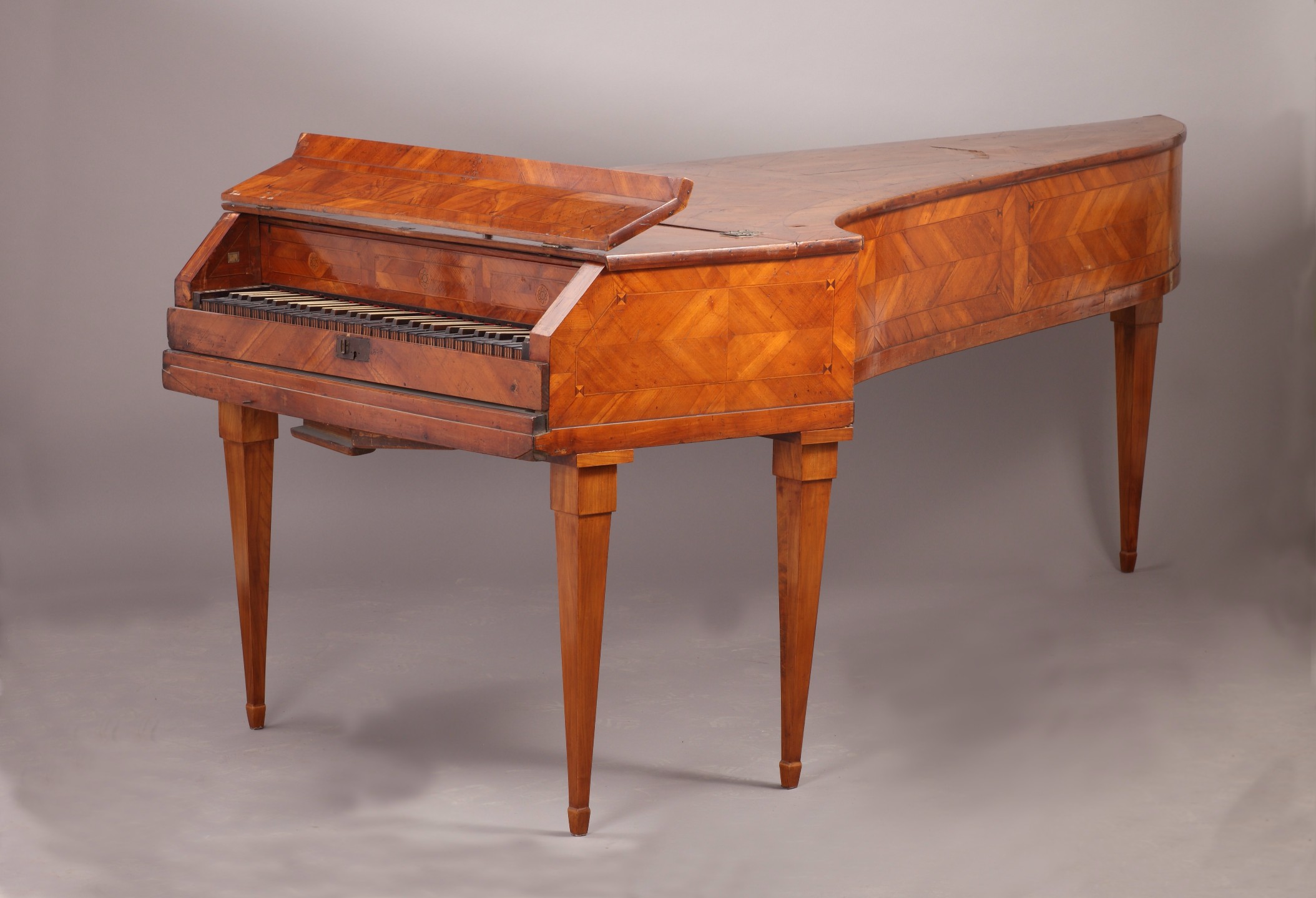Maribor Regional Museum Instrument Collection
The collection of musical instruments of the Regional Museum Maribor consists of 79 exhibits. As well as musical instruments (43 items), the collection includes two gramophones, a late nineteenth-century Ariston organette music machine with thirty accompanying perforated music disks, a part of a music automaton, a violin box and a wooden sheet music container. Most of the museum instruments have been acquired as donations. Although fairly modest, the collection is the second largest in Slovenia, the most extensive being the one held by the Ptuj Ormož Regional Museum.
Keyboard Instruments
This museum collection consists of ten items: two organs (organ positive), a harmonium and an example if its predecessor, the physharmonica, five pianos and an upright. The oldest instrument in the collection is a portative processional organ (positive) from the old Provost Church of St George in Ptuj, made in 1739 by Johann Frančišek Janeček, an artisan from Bohemia who in the 18th century ran a renowned organ-building workshop in Celje. The early eighteenth-century organ positive, made in an unknown organ workshop, probably somewhere in Styria, derives from the Maribor Castle chapel. The instrument has a wooden case decorated with gilded carvings.
The most compelling instrument in the Museum’s piano collection is the one with wing-shaped hammers. It was made in 1792 by Sebastian Lengerer. The piano has a simple Viennese mechanism, black diatonic and white chromatic keys characteristic of the era, and a wooden veneer case. The two table-shaped square pianos originate from the first half of the 19th century. The first specimen was made around 1825 by a Viennese maker, Cyrill Demian, and donated to the museum in 1903 by Dr Amand Rak. In 1947, the Museum acquired a square piano, made by Johann Frenzel of Linz in the early 1830s, from the Federal Collection Centre. In 1970, from the Viltuš Manor in Selnica ob Dravi, owned by the Lannoy family between 1808 and 1856, the Museum acquired a wing-shaped piano made by an acknowledged Viennese piano manufacturer, Friedrich Ehrbar. The collection also contains an upright piano made by Giacomo Aymonino, an Italian piano maker from the second half of the 19th century.
String and Plucked String Instruments
The museum collection contains only three violins (one by Joannes Keffer, a copy of an instrument by the celebrated violin maker Giuseppe Guarneri, and an unsigned violin).
The collection includes ten plucked string instruments. The Museum houses two diatonic harps of simple craftsmanship and of the type used by travelling musicians. A small nineteenth-century harp of simple manufacture donated by a private collector was added to the Museum collection in 1910. An unsigned guitar originates from the mid-19th century. Variously shaped zithers comprise the other plucked string instruments in the collection. These include a preserved specimen of a Slovenian drone zither, an instrument that was fairly widespread in eastern Slovenia. Another interesting item is the mandolin zither donated to the Museum by the family of General Rudolf Maister. The zither, with a unique plectrum, whose particular shape suggests a special tuning of the melody strings, dates to the beginning of the 19th century. The collection also includes two concert zithers from the early 20th century.
Woodwind Instruments
The most extensive part of the collection, the woodwind instruments also surpass the other specimens in terms of quality. As well as the instruments made by foreign craftsmen, the items include a descant flute made around 1800 by a local master, Michael Pöhm of Ptuj. Another flute, made by a Parisian artisan, Jean-Jacques Baumann (1772–1845), in c. 1815, is made of dark-stained wood and features ivory rings. The descant tierce flute was made by a Viennese artisan, Johann Ziegler (1795–1858). The flute in Maribor Museum is one of Ziegler’s oldest known specimens. The flute by a Graz artisan, Adolf Stowasser (1842–1893), originates from the late 19th century.
The other woodwind instruments in the collection are a basset horn, two clarinets, a csakan or Stockblockflöte and an oboe. The basset horn, from around 1815, is from the Viennese workshop of Stephan Koch Sr. Typically bent in the middle, the instrument is made of red-stained maple wood, horn and ivory. The two identical B-clarinets from around 1825 were made by a Viennese craftsman, Johann Baptist Merklein (1761–1847). The clarinets are made of different types of wood, and their rings of horn and ivory. Their bells are modelled in the style of the so-called ‘Viennese School.’ An instrument resembling a recorder, csakan was made in 1845 by Sebastian Knechtl (c. 1815–1873), an acclaimed Viennese woodwind maker. Of Viennese provenance (the workshop of Franz or Stephan Koch Jr), the oboe originates from around 1860.
Brass Instruments
The Maribor Museum has four brass instruments. Made from a slightly curved ox horn and dating from the mid-19th century, the bugle horn was used at the Viltuš Manor, and was added to the museum collection after 1945. One of the exhibits on view is a simple, funnel-shaped and slightly bent bugle made of brass, which it is thought may have been used as a signal horn by the night- watchman. Two flugelhorns, dating from the beginning of the 20th century, came into the Museum’s possession in 1970 from the former Centre of Music Education. While one of them is unsigned, the other bears the symbol of one of the most important musical instrument manufacturers in Germany, Meinel & Herold Musikinstrumentenfabrik Klingenthal I. Sa.
Percussion Instruments
Three Maribor National Guard drums from 1848, which the Museum Society acquired from Maribor Town Hall, have been preserved. The painted shells of two tenor military drums feature characteristic motifs in the form of diagonal colour bands. The bass drum bears similar motifs and is also adorned with a painting of Maribor City’s coat-of-arms.
A special feature of the musical instrument collection is a bell tree dating from the second half of the 19th century. This unique shaker shares the characteristics of instruments used by the historical Janissary bands, famous for their powerful sound produced by numerous brass, wind and percussion instruments. It consists of a metal staff decorated with Oriental brass ornamentation and sleigh bells that ring when the staff is shaken or pounded. The bell tree was used by the Wind Band of the 47th Maribor Infantry Regiment.
Valentina Bevc Varl



